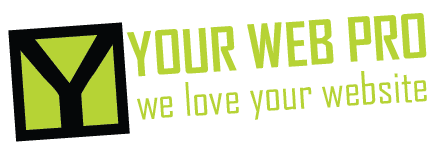If you’re a hunting guide, your website is a key tool for connecting with clients and showcasing your expertise. But just like a well-maintained hunting ground, your website requires periodic updates and sometimes a complete redesign. In this blog, we’ll explore why redesigning websites can boost your business and provide tips for creating a custom website that aligns with your brand and meets the needs of your audience.
Signs It’s Time to Redesign Your Website
Not sure if your website needs a redesign? Here are some common signs that it might be time for a change:
- Outdated Design: If your website looks like it was made in the early 2000s, it’s time for a modern update. Outdated designs can turn visitors away.
- Poor User Experience: If visitors struggle to navigate your site or find information, a redesign can improve usability.
- Lack of Mobile Responsiveness: A large percentage of users browse on mobile devices. If your site isn’t mobile-friendly, you’re missing out.
- Slow Loading Times: Slow websites drive users away. A redesign can improve performance.
- Limited Functionality: If your site lacks essential features, like online booking or multimedia galleries, it’s time to upgrade.
Benefits of Redesigning Your Website
Redesigning your website can bring numerous benefits, including:
- Enhanced User Experience: A fresh design with intuitive navigation improves the user experience and keeps visitors engaged.
- Increased Credibility: A modern, professional website builds credibility and trust with potential clients.
- Improved SEO: A redesigned site with optimized content and structure can boost your search engine rankings.
- Better Lead Generation: A well-designed site encourages visitors to take action, whether it’s booking a hunting tour or signing up for a newsletter.
- Alignment with Business Goals: A custom redesign allows you to align your website with your current business objectives.
Tips for a Successful Website Redesign
When redesigning your website, keep these tips in mind to ensure a successful outcome:
1. Define Your Goals
Before you start, define what you want to achieve with the redesign. Are you looking to attract more clients, improve the booking process, or showcase your hunting skills? Having clear goals will guide the redesign process.
2. Focus on User Experience
Design your site with the user in mind. Make sure navigation is intuitive, and information is easy to find. Consider adding features like a search bar, clear calls to action, and a streamlined booking process.
3. Create High-Quality Content
Content is key to attracting and retaining visitors. Update your website with high-quality images, engaging videos, and informative blog posts. Share hunting tips, gear reviews, and success stories to keep users interested.
4. Make It Mobile-Friendly
Ensure your site is responsive and looks great on all devices, including smartphones and tablets. Mobile-friendly design is crucial for reaching a broader audience.
5. Optimize for SEO
Redesign your site with search engine optimization (SEO) in mind. Use relevant keywords, optimize meta descriptions, and ensure your site is structured for search engine crawlers.
6. Implement Security Features
Ensure your redesigned site is secure. Implement SSL certificates for secure connections, and make sure client data is protected.
7. Test and Gather Feedback
Before launching your redesigned website, test it thoroughly to ensure all features work as expected. Gather feedback from colleagues or trusted clients to identify any areas for improvement.
Redesigning your website can be a game-changer for your hunting guide business. A well-planned redesign can enhance the user experience, improve lead generation, and align your site with your business goals. By focusing on user experience, high-quality content, and mobile-friendliness, you can create a custom website that sets you apart from the competition. Get started on your website redesign today and take your hunting guide business to the next level.

